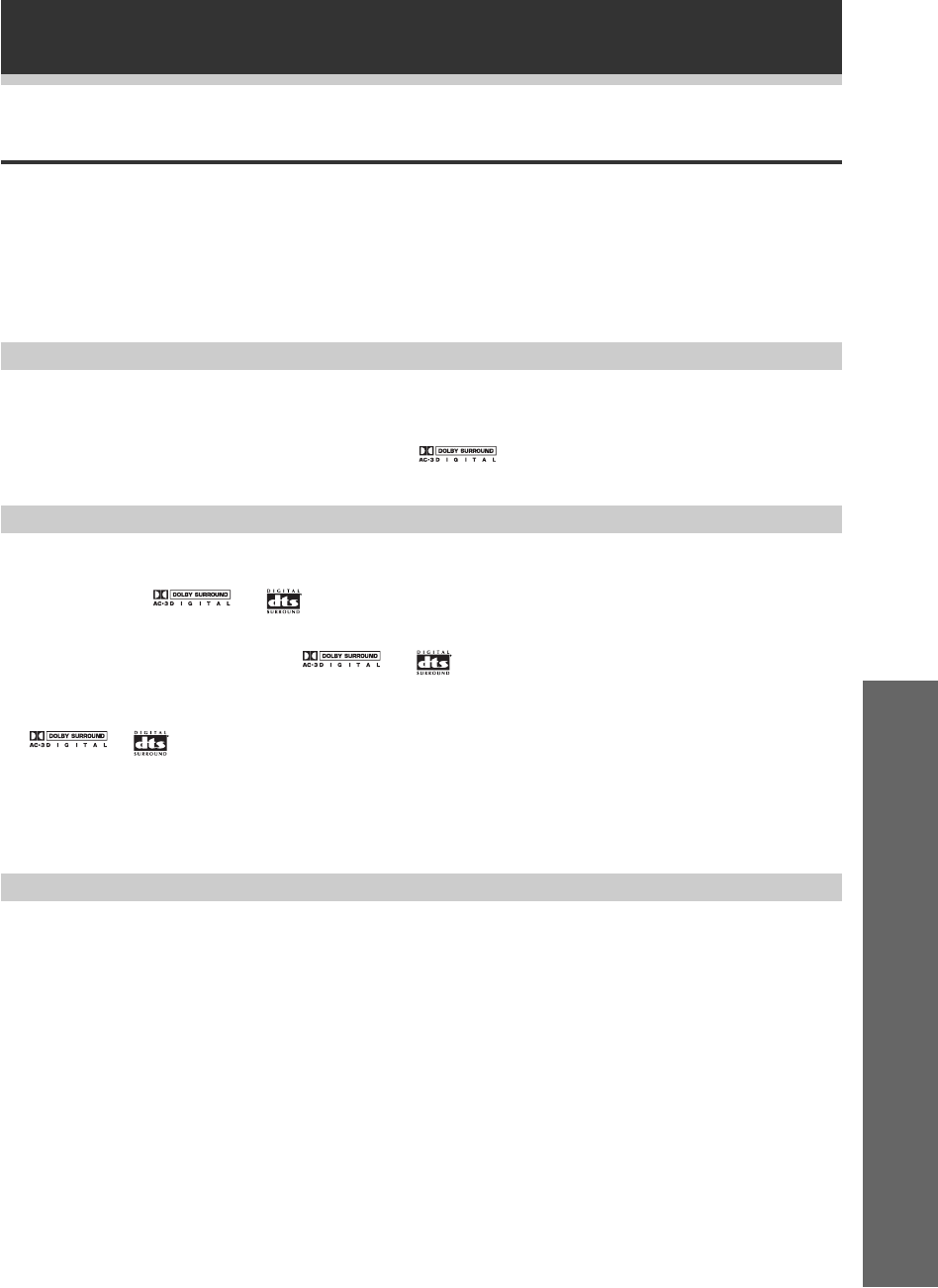
35
En
Operation
Sound Modes
Learning About the Sound Modes
The sound modes are explained here.
There are two cinema modes: STANDARD, and ADVANCED THEATER. These are designed to be used with multi
channel surround sound audio/visual sources (like DVDs and LDs). Intrinsic to home theater, these modes can
deliver realistic and powerful surround sound that recreates the movie theater experience. You may need to
experiment with them to see which settings suit your home system and personal tastes.
The DSP and STEREO modes are designed to be used with music sources but some DSP modes are also suited
for film soundtracks. Again, try different settings with various soundtracks to see which you like.
STANDARD mode
This mode is for pure decoding of Dolby Digital, DTS and Dolby Surround. No special effects are added. It is good
for enjoying movies that have been recorded in Dolby Digital, DTS or Dolby Surround.
You can identify Dolby Digital software by the
1
or marks. Most Dolby Surround software is
marked
3
, but unmarked software may also incorporate Dolby Surround.
ADVANCED THEATER modes
MUSICAL
Simulates the acoustic environment of a large concert hall and is suitable for music on musical sources
marked
1
( ) or .
DRAMA
Simulates the relaxed environment of a classic medium size movie theater, and is suitable for watching
dramas on sources marked
1
( ) or .
ACTION
Simulates the acoustic environment of a modern large movie theater. You can enjoy the power and
dynamics of motion picture audio which is suitable for action movies on sources marked
1
,
or .
EXPANDED
This mode is especially designed to give sound depth to stereo sources. The overall effect builds a dynamic
and broad sound space, allowing two-channel (stereo) signals to faithfully imitate a five speaker sound.
Use with Dolby Pro Logic for a stereo surround effect. You can also use with Dolby Digital sources for a wider
stereo field than STANDARD mode.
DSP modes
The DSP (Digital Signal Processing) modes allow you to transform your living room into a variety of different
sonic environments when playing standard (two-channel) stereo sources, Dolby Surround sources, and Dolby
Digital sources. If you try to add this effect to functions which cannot use it “SP off” flashes in the display.
HALL 1
Simulates the acoustic environment of a large concert hall of wooden construction. Complex delay of
reflected sounds coupled with reverberation effects create a dynamic and beautiful sound characteristic
of an orchestra performing in a concert hall, making it suitable for classical music.
HALL 2
Simulates the acoustic environment of a concert hall with stone walls. The rich reverberations and natural
fullness of the sound create the auditory impression of being in a concert hall, making it suitable for
classical music.
JAZZ
Simulates the acoustic environment of a jazz club. Less delay on the reflected sounds emphasizes the
sensation of hearing a live band.
DANCE
Simulates the acoustic environment and strong bass sound of a nightclub with a square dance floor. A
short delay on the reflected sounds emphasizes the raw power of the dance music.
THEATER 1
Adjusts the delay of the reflected sound to simulate the acoustic environment of a medium sized movie
theater.
THEATER 2
Simulates the acoustic environment of a theater while maintaining proper localization of each channel.


















